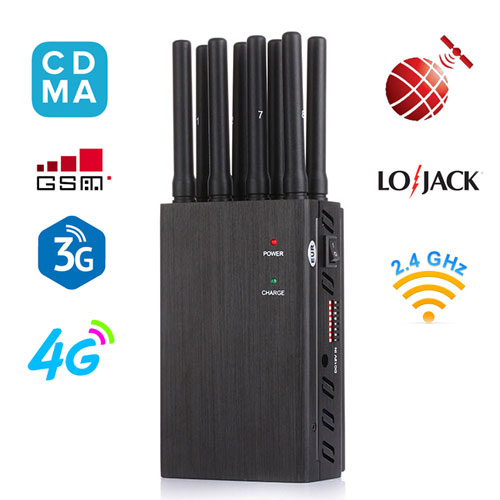The health prison in Paris, which reopened on January 7, 2019 after four years of work, is equipped with a new jamming system for laptops. This technology has been implemented multiple times and the evolution of phones has often made it obsolete.
In 2017, a new record was broken in French prisons. According to the Directorate of Prison Administration (DAP), more than 40,000 cell phones and accessories have been seized. A steadily increasing number for 10 years.
In the fight against the proliferation of telephones, the reopening of the health prison in Paris on January 7, 2019 is worth a test. It is the first prison to be equipped with a new portable jammer system. This technology has already been implemented and is not without its drawbacks.

20 million euros for 2019
Justice Minister Nicole Belloubet replied to a written question from a senator on November 29, 2018 that a budget of 19.9 million euros was planned for the installation of new jammers in prisons in 2019. In 2018 this budget was 14.7 million euros.
The Justice Department states that the implementation of this technology will primarily affect "facilities designed to house the most dangerous prisoners (central houses) and new or re-opening facilities". The health prison is the first to have these new jammers. Two other facilities are mentioned and will soon be equipped: the Osny prison in Ile-de-France and that of Vendin-le-Vieil (Pas-de-Calais), where Redoine Faïd is imprisoned.
Former jammers overwhelmed by the evolution of phones
However, cell phone jamming in prison has been a recurring theme in France for several years. Since 2002 the law has allowed portable jammers to be installed in prison. As of January 1, 2018, 110 prisons were equipped with 894 jamming devices, i.e. H. 60% of the prisons.
Problem: The previous devices have shown their technical limits in view of the development of mobile phones. According to the Justice Department, this new portable jammer system is suitable not only for 4G but also for future 5G. It should also be adapted to the specifics of the prison architecture - reinforced concrete walls, grids, bars - which limited the effectiveness of the old devices.
"In the past, similar amounts of money were devoured for devices that ultimately only encrypted 2G [second generation technology], so there were always delays," said Marie Crétenot, advocacy director at the International Prison Observatory.
"And that obscures the real question: why are people willing to introduce cell phones in prison," said Marie Crétenot, adding that "most cell phones are used to call family members and loved ones." The reasons: the schedules imposed, the lack of privacy, the high cost of calling landlines in prison. "A mobile phone will always be much more beneficial, especially for families, who are generally in a rather precarious socio-economic situation," she explains.
Support judicial unions, but be careful
For Nadia Labiod, representative of the UFAP-UNSa judiciary in the health prison, this technology represents a step forward in the fight against the proliferation of cell phones in prison. “The telephone is used as a means of transport, as a means of pressure. Since he will no longer go to prison, we will eliminate this problem, ”she believes. The only limitation is that jammer do not interfere with communications between the guards or those of residents who live near any prisons in the city.
An opinion from Ambroise Koubi, regional secretary of the CGT prison of Ile-de-France: "This will limit all traffic inside the prisons and reduce conflict," he said. "But we're waiting to see what happens in the long run. We're not going to cheer until we see the effects later in the year." "
In 2014, the General Plenipotentiary for Places of Detention, Jean-Marie Delarue, stated that he was in favor of detainees being allowed to own a mobile phone, which was seen as a "significant reassuring factor" in detention. A statement from the International Prison Observatory. In addition to the jammers, the health prison in Paris is now equipped with fixed telephones in the cells.




